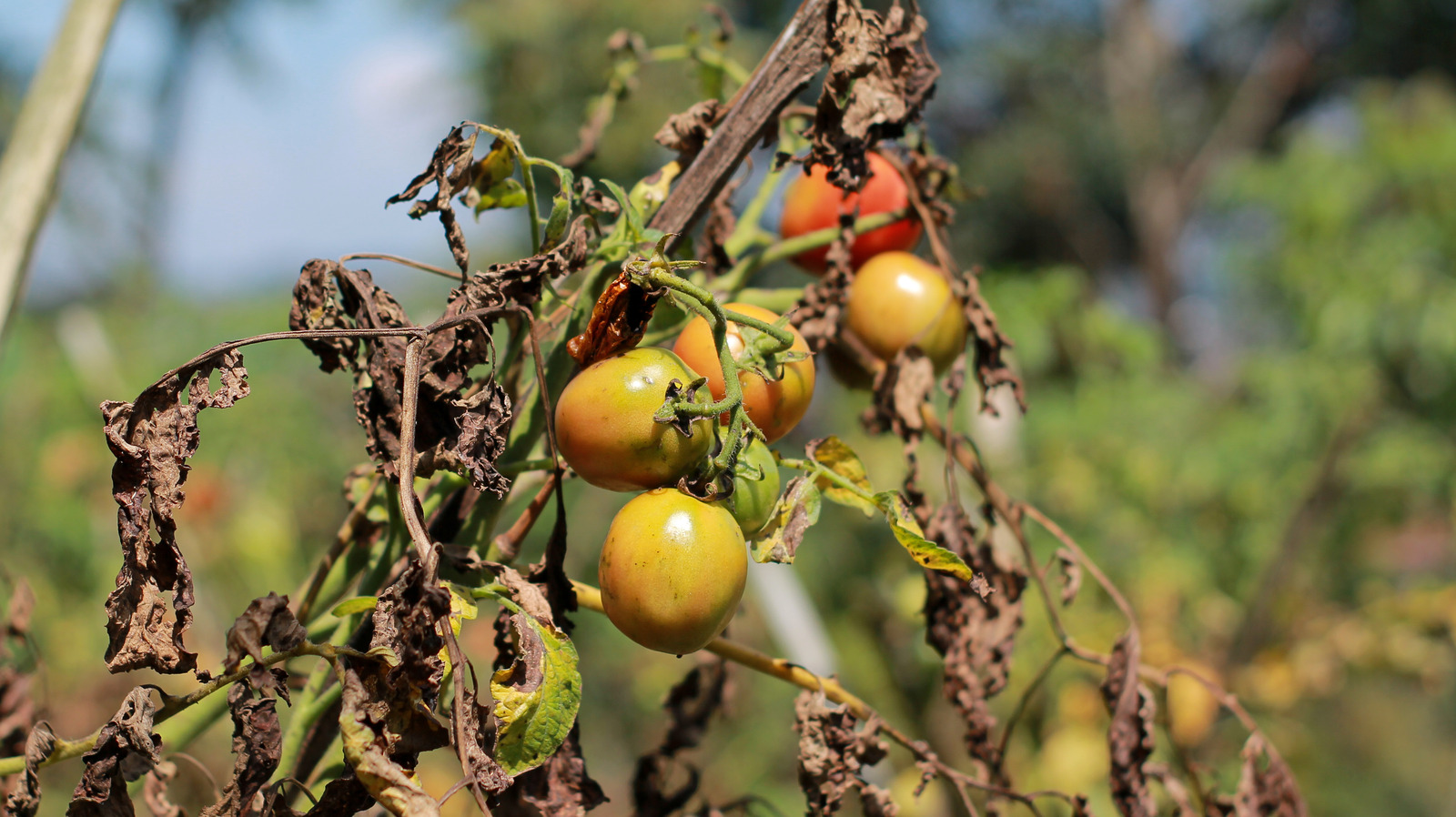
Why Your Tomato Plant Leaves Are Turning Brown – House Digest
Growing tomatoes is so common that it seems like a rite of passage for the backyard gardener. But they’re hardly overrated, with so many varieties offering unique colors, textures, and flavors. You could try a few varieties each year and never get bored!
Unfortunately, you’ll probably come across some problems while you work on growing the best tomatoes. Getting the right amount of sunlight, water, and nutrients while trying to prevent and treat pest and disease problems feels like a balancing act. When your tomato plant leaves turn brown, it can be hard to pin down what’s causing it when there are so many things happening at once.
The brown leaves on your tomato plant could mean anything unless you know what else is going on in the garden, but the problem typically comes down to disease, pests, or dehydration. If you know which diseases like moist conditions and which pests target stressed plants, you can easily whittle down the list to a few possibilities. From there, you’ll be able to address this issue and bring your plant back to good health.
Dehydration and pests
 Floki/Shutterstock
Floki/Shutterstock
Tomato leaves will turn brown and crunchy when they’re severely dehydrated. The first sign that your tomato needs water is wilted leaves, so you can reverse this damage before it’s too late. Once the leaves are brown, it may be a sign that part of the plant died. Remove the dead parts and correct your watering schedule moving forward. Tomatoes usually need 1 to 2 inches of water per week, though this can change with how much (or how little) rain you get in the summer.
Spider mites are tiny little pests you probably won’t spot right away. They create white webbing and suck the sap out of plants, leaving behind small brown dots. Most plants can tolerate a minor infestation. Wash the mites off with water or treat them with insecticidal soap, and that should be the end of your worries. However, severe infestations can lead to yellow leaves that drop off the plant. Unchecked spider mite populations can kill a plant by causing too many leaves to drop.
Fungal and bacterial diseases
 AmBNPHOTO/Shutterstock
AmBNPHOTO/Shutterstock
Unless you have water-related issues in the garden, diseases will probably be the culprit of brown leaves. Each has a few defining characteristics that will help you tell it apart.
Early blight is a fungal disease that spreads in wet weather. It’s usually left behind on foliage from previous crops, so it’s important to clean out your garden beds every year. Early blight starts at the bottom leaves and moves up; it creates brown concentric circles on leaves. Septoria leaf spot spreads similarly, but the dark brown spots usually have a lighter color in the center. Fusarium wilt is another fungal disease that can be tough to spot because it turns leaves yellow before they turn brown, making you think the plant has a nutrient deficiency. Southern blight is perhaps the most lethal of the fungal diseases. The lower branches of the plant will turn dark brown. It can spread to the whole plant and collapse it. Bacterial canker is an infectious disease that can spread between plants that touch. The edges of the plant will be crisp and brown with yellow around it, and the inside of the leaf usually stays green.
The best way to treat a diseased tomato plant is to remove the parts that are affected to stop the issue from spreading. There are also fungicides available, but the best defense is prevention — things like watering at the root, maintaining airflow, and rotating crops will breed a healthy environment.





















































